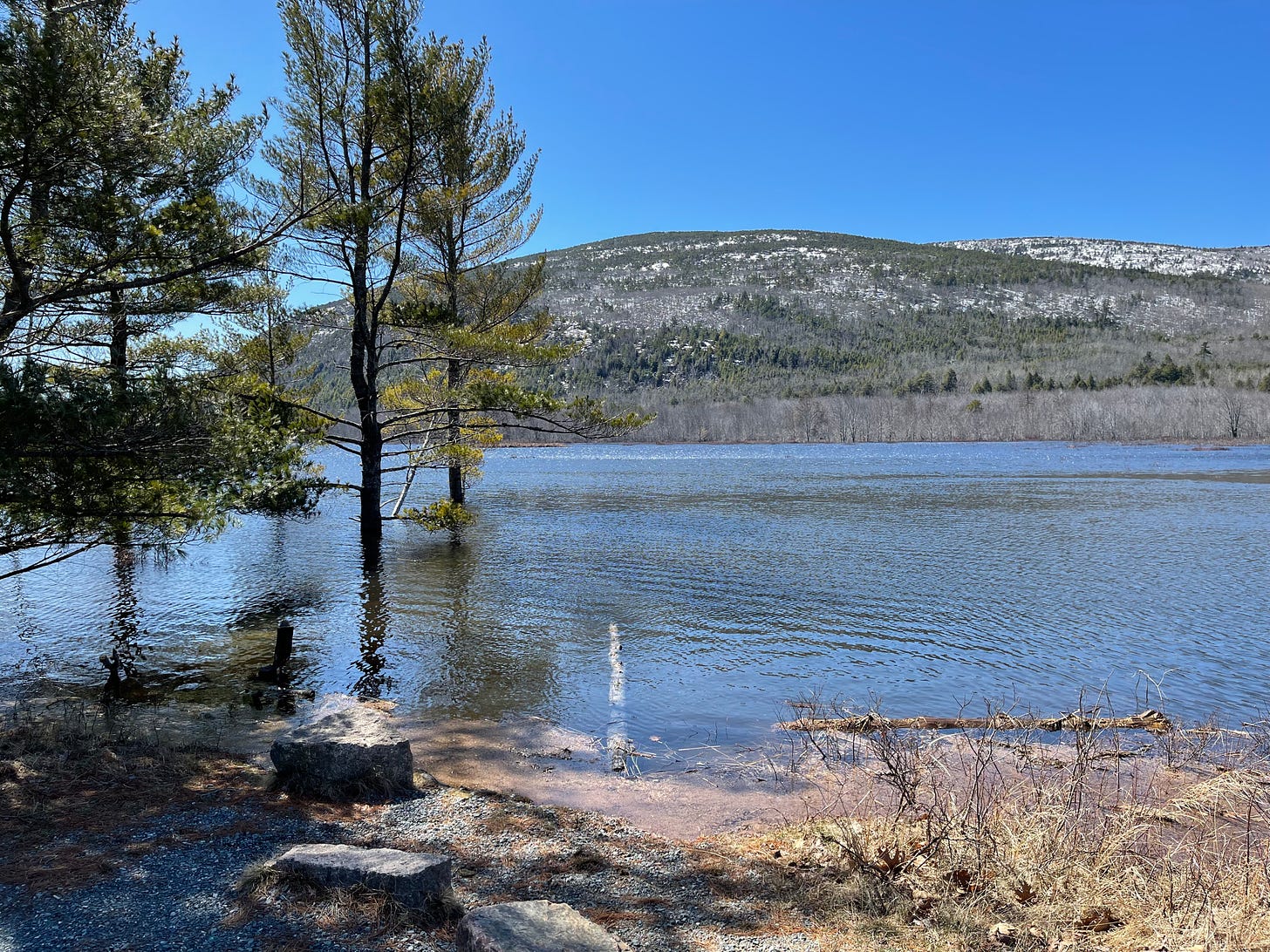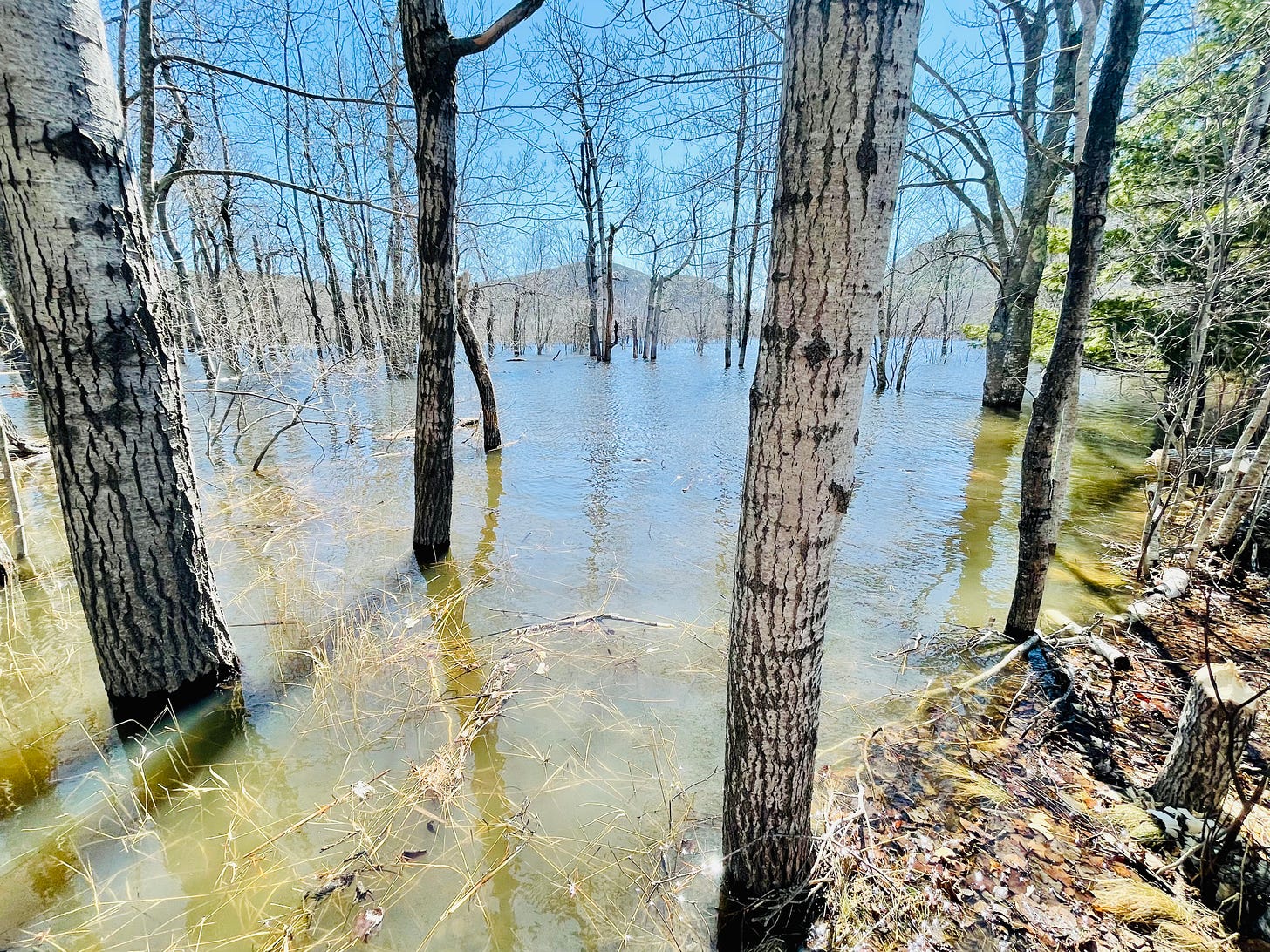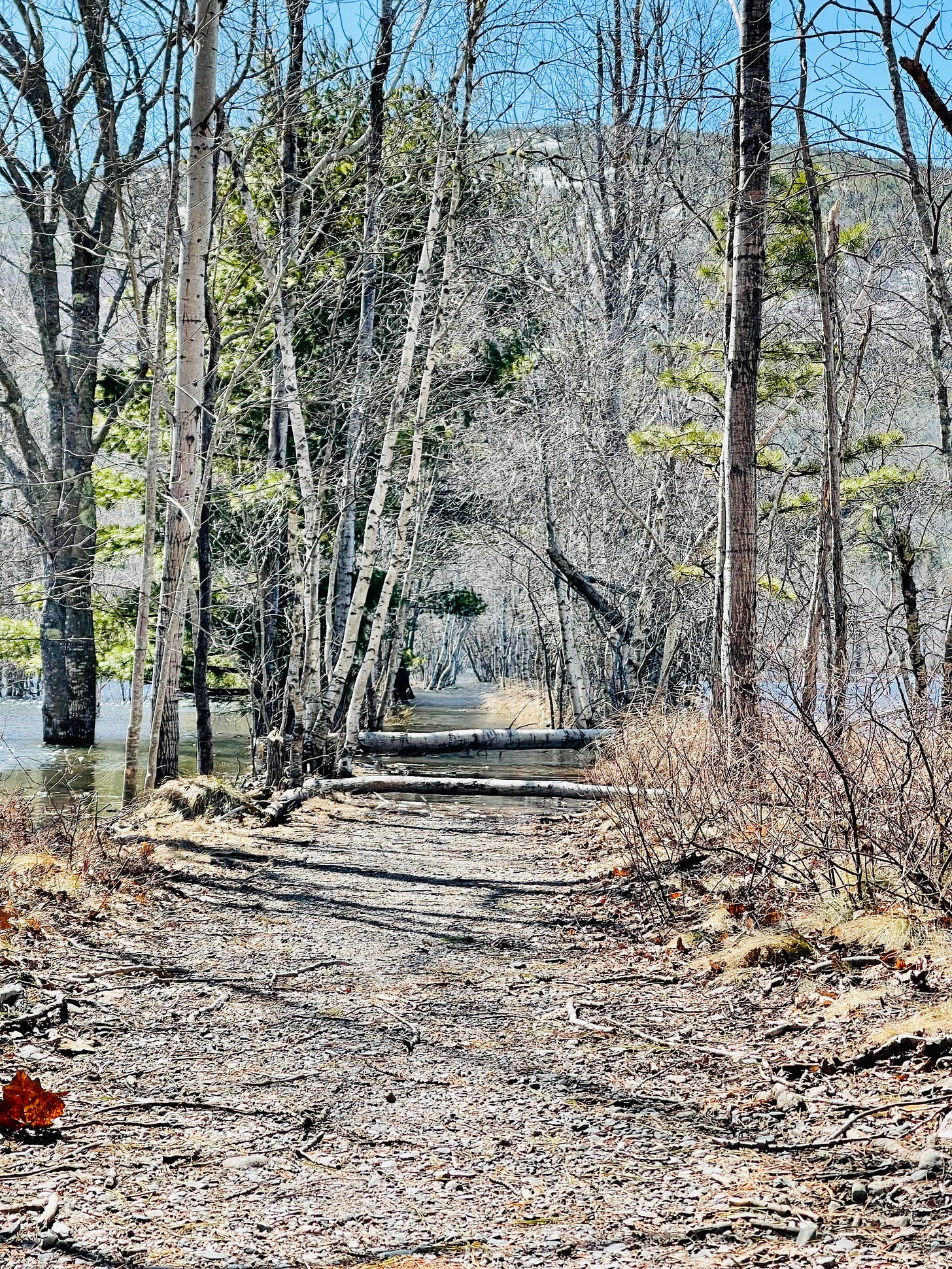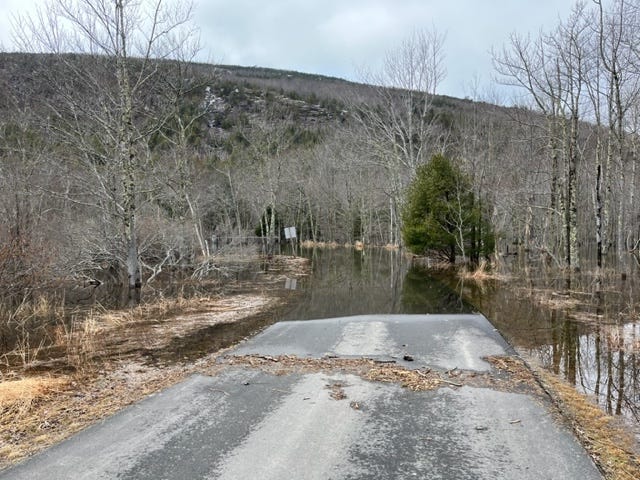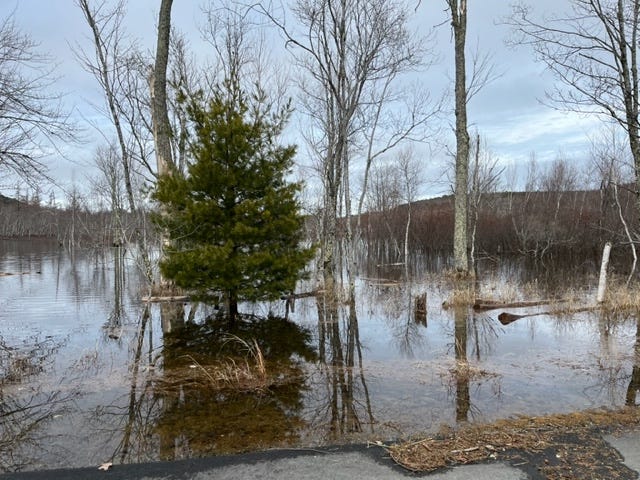BAR HARBOR—While many have enjoyed the occasional ice-skating outing in Sieur de Monts or on Great Meadow or even one of its tributaries or nearby flooded areas, the flooding of Great Meadow is currently of an extraordinary duration. This is because of the influence of man and machine, and it will take men and machines to make it more ordinary again. The National Park Service is currently working on that.
This past week The Bar Harbor Story conducted an email interview with Amanda Pollock, Acadia National Park’s and Saint Croix Island International Historic Site’s Public Affairs Officer. Pollock collaborated with others at ANP to answer our questions as fully as possible. The questions and answers are below.
What is the amount of flooding in the Great Meadow area?
The recent flooding in Great Meadow is extensive, extending well into the Sieur de Mont parking lot, which remains closed.
Is this amount abnormal or caused by an unnatural influence that is making it greater than it should be? What is the cause?
The Great Meadow landscape has been significantly manipulated by humans: the construction of buildings and parking lots created impervious surfaces, and roads (current and historic) were constructed with undersized culverts that restrict water flow. These changes impact the meadow’s ability to function properly.
Furthermore, the effects of climate change include more frequent rain incidents: saturating the meadow faster than it can drain.
When did this latest session start?
The park closed Sieur de Monts parking lot on January 30 because of flooding. In the past several weeks, park staff has tried several times to unblock the undersized culvert at the outlet under the Park Loop Road, to no avail.
Park staff are now working with a local contractor with larger equipment to attempt to clear the culvert.
Is it a common problem?
Flooding has become more frequent in the past several years, as we see more frequent and more intense precipitation events. The article Meaning of a Meadow on our park website explains the importance of the site and how we got to where we are today.
What is the remedy? When is the park planning on remedying the cause if it is more than just a natural occurrence/cause?
In the short term: When park staff went to try and clear the undersized culvert, they realized that they needed more support to successfully clear it. Park staff are diligently working to find the proper support to clear the culvert as soon as possible. Once the culvert is cleared, the water levels will be able to slowly adjust and return to normal.
As of yesterday - park staff were successful in partially clearing the culvert. Although it will take some time for the water levels to adjust: water is moving again.
Through a project funded largely by the Bipartisan Infrastructure Law, the National Park Service, partner foundations, and individual donors, work is underway to restore the Great Meadow Wetland ecosystem for recreation and climate-smart management. The National Park Service held a public scoping meeting in November, 2022, inviting public input on its plan to restore the Great Meadow wetland.
The proposed project plan includes replacing the culvert at the outflow of the Great Meadow, restoration of Cromwell Brook, removal of non-native invasive plant species with native plant restoration, targeted wetland restoration, and visitor-use improvements to increase accessibility and enjoyment of the area.
Since that public meeting, the National Park Service began developing of an environmental assessment, which will be released for public comment this spring.
Are there other areas in the park where similar things are happening?
No.
Is there any long-term damage to the boardwalks, the ecology, or the Wild Gardens of Acadia?
Right now, we don’t know what kind of damage the flooding caused. After water levels return to normal, park and partner staff will assess the damage to the area and plot a path forward together.






